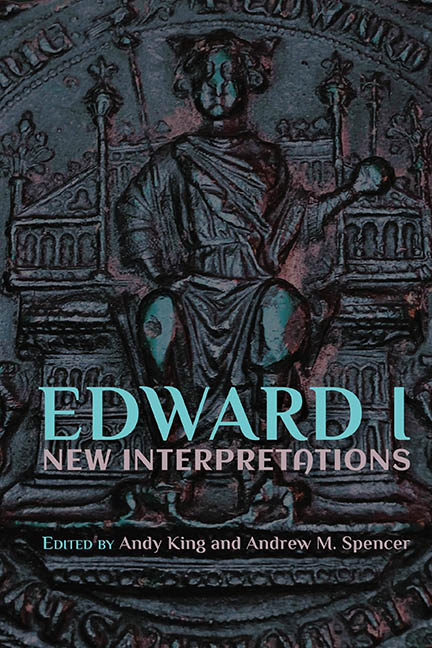Book contents
- Frontmatter
- Contents
- List of Contributors
- Acknowledgments
- Abbreviations
- Genealogy of Edward I
- Introduction
- 1 The Lord Edward and the Administration of Justice across his Apanage, 1254–72
- 2 A Tale of Two Ministers: Robert Burnell, Walter Langton and the Government of Edward I
- 3 Law and Order in the Reign of Edward I: Some New Thoughts
- 4 Magnates, Ritual and Commensality at Royal Assemblies: Bogo de Clare and Edward I’s Easter Parliament, 1285
- 5 Royal Daughters and Diplomacy at the Court of Edward I
- 6 Hearts and Bodies: Edward I and the Scottish Magnates, 1296–1307
- 7 Edward I and the Blessed Virgin Mary
- 8 Letters and Political Discourse under Edward I
- 9 Crisis? What Crisis? 1297 and the Civil War that Never Was
- Index
5 - Royal Daughters and Diplomacy at the Court of Edward I
Published online by Cambridge University Press: 21 March 2020
- Frontmatter
- Contents
- List of Contributors
- Acknowledgments
- Abbreviations
- Genealogy of Edward I
- Introduction
- 1 The Lord Edward and the Administration of Justice across his Apanage, 1254–72
- 2 A Tale of Two Ministers: Robert Burnell, Walter Langton and the Government of Edward I
- 3 Law and Order in the Reign of Edward I: Some New Thoughts
- 4 Magnates, Ritual and Commensality at Royal Assemblies: Bogo de Clare and Edward I’s Easter Parliament, 1285
- 5 Royal Daughters and Diplomacy at the Court of Edward I
- 6 Hearts and Bodies: Edward I and the Scottish Magnates, 1296–1307
- 7 Edward I and the Blessed Virgin Mary
- 8 Letters and Political Discourse under Edward I
- 9 Crisis? What Crisis? 1297 and the Civil War that Never Was
- Index
Summary
ON 9 October 1273 at Sorde-l’Abbaye in southern Gascony, the English king Edward I negotiated a matrimonial alliance ‘per verba de futuro’ between his daughter by his queen consort, Eleanor of Castile, and the eldest son of the Aragonese infante Peter. In an age when a royal marriage was usually too important a matter to be decided by the bride and groom alone, from a parental perspective there were a number of potential political reasons for this particular match. Behind it, on the part of the Aragonese, lay, perhaps, a desire to find allies who might counter Charles of Anjou's aggressive domination of Sicily. After all, Charles had seized the Sicilian Regno from its Hohenstaufen rulers, with papal backing, between 1265 and 1268. Constance, Peter of Aragon's wife, was the daughter of Manfred (d. 1266), the last Hohenstaufen ruler of Sicily; after her nephew Corradin's execution at Charles’ hands in 1268, Constance inherited a strong claim to her father's throne there. The Aragonese might, similarly, have hoped for support against the Capetians in securing their rights to contested territories in the south of France. Peter and Edward I also probably welcomed the opportunity to strengthen the security of the Aragonese-Catalan border with Gascony. Such a concern on Edward's part is strongly suggested by the way in which a second, but ultimately ill-fated union that apparently served a broadly similar purpose was proposed just a few months later, in December 1273, this time between Edward's eldest surviving son, Henry, and Juana, the heiress to the neighbouring kingdom of Navarre. Edward I might well have felt attached to his family's remaining territories in south-west France; he had exercised personal lordship over them since 1254, when Gascony had formed part of the appanage bestowed upon Edward at the time of his own marriage.
In the midst of the diplomatic manoeuvrings of 1273, however, it is difficult to trace any particular concern for the personal welfare of the young bride-to-be and her intended groom. The mooted Anglo-Aragonese marriage did not take place straight away – Eleanor, who was the oldest English royal daughter, was still only four years old, while Alfonso, Peter's heir, was seven.
- Type
- Chapter
- Information
- Edward I: New Interpretations , pp. 84 - 104Publisher: Boydell & BrewerPrint publication year: 2020



